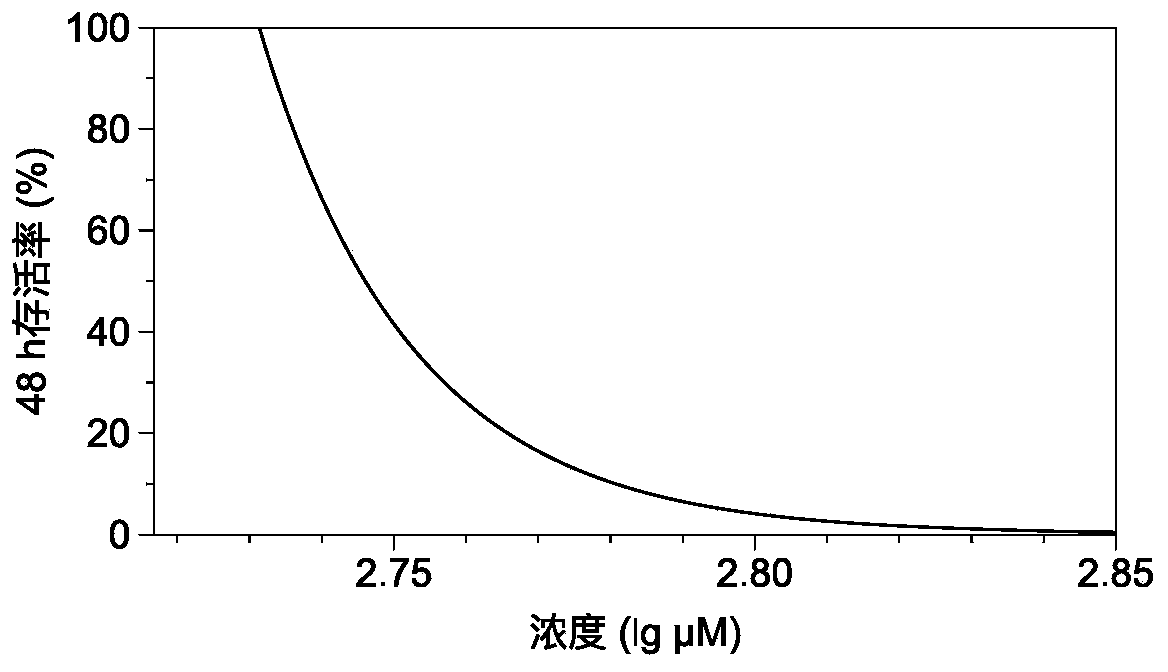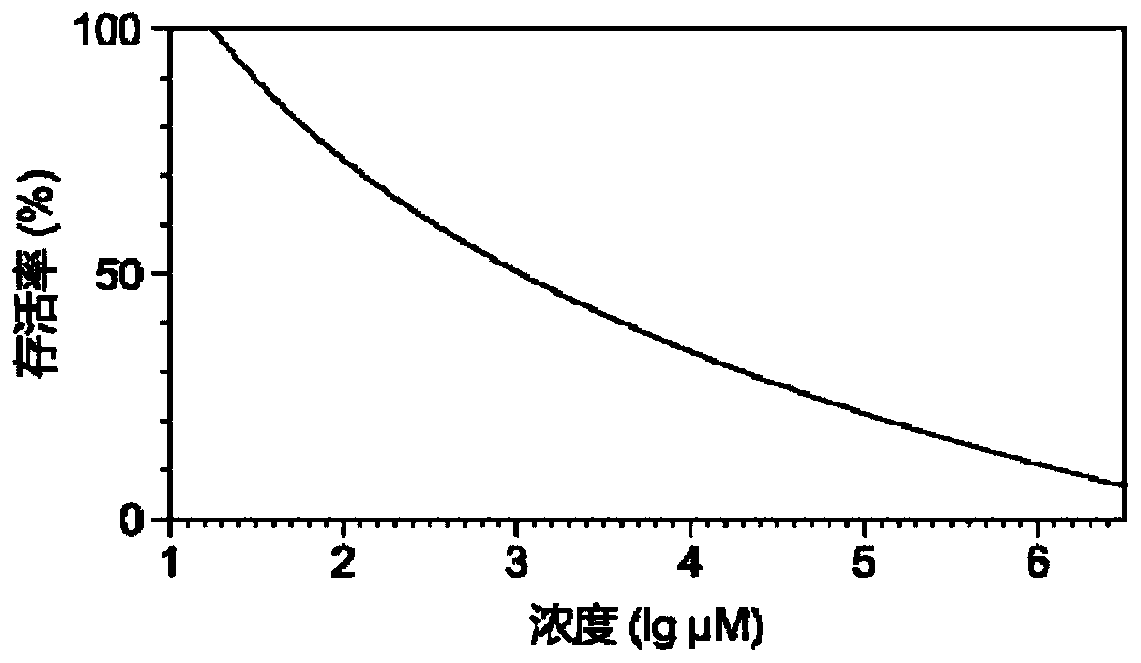Method for testing ecotoxicity of disinfection by-products
A technology of disinfection by-products and ecotoxicity, which is applied in compound screening/testing, measuring devices, instruments, etc., can solve the problems of high requirements and lower reliability of results, so as to improve safety, facilitate promotion, and meet the needs of cultivation. Simple operation effect
- Summary
- Abstract
- Description
- Claims
- Application Information
AI Technical Summary
Problems solved by technology
Method used
Image
Examples
Embodiment 1
[0029] First prepare the artificial seawater: add sea salt to the ultrapure water, adjust the salinity to 35±1‰, and finally filter it through a glass fiber filter membrane with a pore size of 0.22 μm, put it in a brown bottle for temporary storage, and prepare it now. Then prepare the water sample to be tested: weigh a certain mass of IAM (iodoacetamide) and dissolve it in the prepared artificial seawater, prepare 4 groups of water samples to be tested with different IAM (iodoacetamide) concentrations, each group is prepared 500mL.
[0030] Hatching of Artemia: Take 3-5g of anhydrous Artemia freeze-dried eggs and put them into a 1500mL beaker filled with 1200mL seawater, seal the top of the beaker with aluminum foil, put it in a constant temperature water bath at 26±1°C, and blow air with a small air pump Perform gas storm incubation for 12 hours; immediately after the hatching is over, randomly pick out the first instar Artemia with a Pasteur pipette and place it in a 150 mm...
Embodiment 2
[0037] First prepare the artificial seawater: add sea salt to the ultrapure water, adjust the salinity to 35±1‰, and finally filter it through a glass fiber filter membrane with a pore size of 0.22 μm, put it in a brown bottle for temporary storage, and prepare it now. Then prepare the water sample to be tested: weigh a certain mass of IAA (iodoacetic acid) and dissolve it in the prepared artificial seawater, prepare 10 groups of water samples to be tested with different IAA (iodoacetic acid) concentrations, and prepare 500 mL for each group.
[0038] Hatching of Artemia: Take 5g of anhydrous freeze-dried eggs of Artemia and put them into a 1500mL beaker filled with 1200mL of seawater. Air-incubated for 10 hours; immediately after the hatching was over, the first instar Artemia was randomly picked out with a Pasteur pipette and placed in a 150mm crystallization dish filled with sufficient seawater.
[0039] Cultivation of Artemia: Put the first instar Artemia in a light incuba...
PUM
 Login to View More
Login to View More Abstract
Description
Claims
Application Information
 Login to View More
Login to View More - R&D
- Intellectual Property
- Life Sciences
- Materials
- Tech Scout
- Unparalleled Data Quality
- Higher Quality Content
- 60% Fewer Hallucinations
Browse by: Latest US Patents, China's latest patents, Technical Efficacy Thesaurus, Application Domain, Technology Topic, Popular Technical Reports.
© 2025 PatSnap. All rights reserved.Legal|Privacy policy|Modern Slavery Act Transparency Statement|Sitemap|About US| Contact US: help@patsnap.com



